Well, fear not! We’re here to answer all your burning questions about these innovative pools. From their unique features to their cost-effectiveness, we’ve got you covered with our comprehensive guide to fibreglass swimming pools.
Get ready to be amazed by the benefits of fibreglass pools, including their quick installation time and long lifespan. And if you’re still hungry for more information, we’ve included helpful links for you to dive deeper into the world of fibreglass swimming pools.
Ready to take the plunge? Let’s explore the future of swimming pools together!
On average, most fibreglass pool projects cost between $50,000 – $60,000 for a smaller pool and can cost up to $85,000 for larger pools.
(Vinyl liner pools cost $35,000–$75,000, and concrete pools run $80,000–$100,000+.)
It’s important to keep in mind that the final cost will depend on the size, location, features, and upgrades you choose. Here are some common factors that can affect the cost of an inground fibreglass pool:
While the upfront cost of a fibreglass pool may be higher than other options like vinyl liner pools, the long-term maintenance costs are significantly lower.
Once the pool is ready for use, you don’t need to purchase many chemicals or run much equipment to kill algae. In fact, long-term fibreglass pool maintenance will only cost around $1,100 for every 10-year period, this is significantly less than around $12,000 for a vinyl liner pool and $20,400 for a concrete pool over the same time frame.
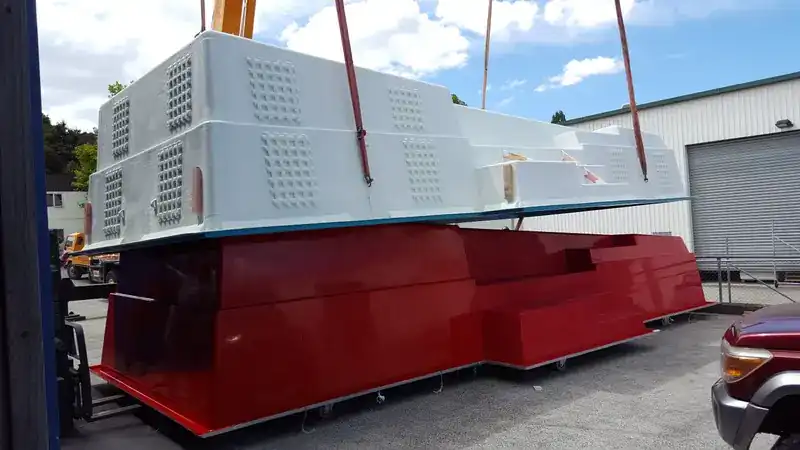
At Principal Pools, we take pride in our advanced manufacturing methodology, which results in the strongest and most durable fibreglass pools. Here is our process:
High-quality construction: We only use the best-sourced materials for your pool. Our pool builders have over 20 years of experience, and we take great care in making sure every pool lives up to the NZ Swimming Pools name.
Mould preparation: We use highly finished and defect-free swimming pool moulds, and we take extra precautions to make sure the mould is ready for the application of gel coat.
Aquaguard gel coat: application We use high-performance gel coats that exhibit outstanding weathering and fade resistance properties and contain stunning jewel highlights. Our premium gelcoat supplier is Nuplex.
Structural layer technology: We apply four full layers of structural fibreglass, and enclose the edge of the bond beam back to the pool to ensure superior quality.
Strengthening and bracing: We apply a rigid support structure with further fibreglass to strengthen and brace the pool, and enclose steps and seats with fibreglass to provide full support.
Water barrier: We use a specially formulated coating that provides the ultimate in swimming pool protection to protect the Gelcoat from water and moisture.
Our pool colours, Aquaguard Shimmer, are striking and highly decorative, with outstanding weather and fade resistance properties.
At Principal Pools, we believe in manufacturing fibreglass pools that are built to last, and we stand behind our advanced manufacturing methodology.
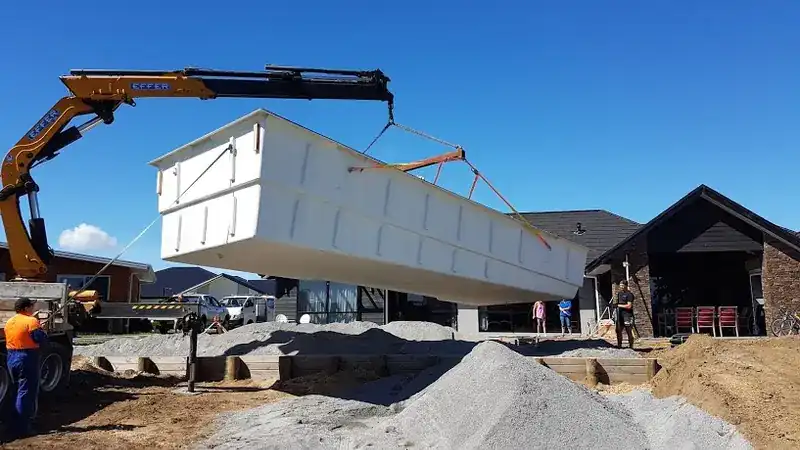
Installing a fibreglass pool is a complex process that requires knowledge and experience to complete properly. Here’s a brief overview of how it works:
Site preparation: The first step is to prepare the site where the pool will be installed. This involves excavating the soil to the right depth and grading the area to ensure it is level and free of any obstructions.
Setting and levelling the pool: Once the site is prepared, the fibreglass pool shell is placed into the hole and levelled using specialized tools and techniques. The shell is then secured in place to prevent it from shifting or moving.
Installing the plumbing and filter system: The next step is to install the pool’s plumbing and filter system. This involves connecting the pool to the main water supply and sewer lines, as well as installing the filtration and heating systems.
Backfilling the pool shell: Once the pool’s plumbing and filter system is in place, the space around the pool shell is backfilled with gravel and sand. This provides support and stability for the pool and helps prevent soil erosion.
Installing the coping and patio: After the pool is backfilled, the coping and patio are installed. Coping is the decorative edge around the pool, and the patio is the area surrounding the pool where people can lounge and sunbathe.
Installing the pool fence: The final step is to install the pool fence, which is required by law in many areas to ensure the safety of swimmers and prevent accidents.
At Principal Pools, we take pride in our advanced installation techniques, which include the use of high-quality materials, state-of-the-art equipment, and skilled professionals to ensure that your fibreglass pool is installed properly and will last for many years to come.
When it comes to installing a swimming pool, the time it takes to complete the process is a major consideration for many homeowners. Fortunately, fibreglass pools offer a quick and easy installation process, and here’s why:
Installation Time: The average installation time for a fibreglass pool is between 1-2 days. This timeframe includes the installation of the pool itself. However, the patio and landscaping can take up to 2-4 weeks to complete.
Quick Use: One of the great benefits of a fibreglass pool is that you can start using it almost immediately after installation. In fact, you can swim in your pool by the end of day 2!
Comparison: When compared to other pool types, the installation time for a fibreglass pool is significantly shorter. For example, the installation process for a vinyl liner pool can take anywhere between 4-8 weeks, while a concrete pool can take up to 3-6 months to complete. During this time, your yard will be a mess, and the pool will be completely unusable.
If you’re looking for a quick and hassle-free installation process, a fibreglass pool may be the right choice for you.
Compared to vinyl liner or concrete pools, fibreglass pools are incredibly easy to maintain. They require less time, effort, and expense in the long run.
The gelcoat surface of fibreglass pools is smooth and non-porous, which makes it resistant to algae growth. This means that maintaining proper water chemistry is the only thing you need to focus on to keep the pool clean and clear. You should check and adjust the pH, total alkalinity, and sanitiser levels of the water weekly to keep it balanced.
The filter also needs to circulate the water for at least one cycle per day to remove impurities, debris, and contaminants from the water. This ensures that the water remains crystal clear and sparkling.
In addition, the gelcoat surface of fibreglass pools is highly durable and long-lasting. If manufactured well and maintained properly, it should never need to be refinished or resurfaced, which means you’ll save a significant amount of money and time compared to other types of pools.
Overall, fibreglass pools are the easiest type of pool to maintain, requiring minimal effort and expense to keep them in top condition.
Fibreglass pools are designed to last for a long time, typically several decades. At Principal Pools, we are so confident in the longevity of our pools that we offer a lifetime structural warranty. As long as the pool is used regularly and maintained properly, it should not leak or experience structural issues.
Additionally, the gelcoat surface of a fibreglass pool can also last for decades if it is manufactured and maintained properly. This makes it one of the most durable pool coatings available on the market today. Proper maintenance includes regularly maintaining the water chemistry to prevent premature or uneven fading of the gelcoat surface.
Over time, all pools will experience some degree of lightning. However, if a fibreglass pool is properly manufactured and maintained, its gel coat surface is the most durable pool coating available in terms of both appearance and life expectancy.
The gelcoat surface of a fibreglass pool will lighten gradually and evenly, and while you may notice some difference between a new colour sample and a 10-year-old pool, it will likely not be significant. It’s important to note that premature or uneven fading of the gelcoat surface is almost always due to improper water chemistry.
Fibreglass pools are built from moulds in a factory, so you have fewer options to customize the size and shape. However, you can customize almost everything else, including:
Fibreglass pools come in various sizes and shapes, although they’re more limited than concrete or vinyl liner pools. Most fibreglass pool shapes fall into one of these categories:
The sizes of fibreglass pools can range from as small as 6×3 to as large as 12m by 4.4m, although they must be 16 x 40 ft or smaller to fit on a flatbed truck and travel on the motorway.
Yes, you can heat a fibreglass pool just like any other type of pool. There are several heating options available, including solar, electric, and gas heaters.
Keep in mind that the type of heating system you choose will depend on your pool’s size and your local climate.
Fibreglass pools can be installed indoors, but there are some considerations to keep in mind.
Indoor pools require proper ventilation to prevent humidity and moisture buildup, which can lead to structural damage over time. Additionally, you’ll need to factor in the cost of heating and maintaining an indoor pool.
Yes, fibreglass pools are highly durable and long-lasting. The fibreglass shell is made from a composite material that is known for its strength and resilience. Unlike concrete pools, fibreglass pools don’t crack or chip, and they’re less prone to leaks and other types of damage.
In addition, the gelcoat surface of fibreglass pools is highly resistant to fading, staining, and other types of wear and tear. If properly manufactured and maintained, the gelcoat surface should last for decades without the need for refinishing or resurfacing.
Overall, fibreglass pools are one of the most durable and low-maintenance types of pools available in the market. They’re built to last and require minimal upkeep, making them a great investment for any homeowner.
While fibreglass pools come in a variety of sizes, most manufacturers offer a range of standard sizes to choose from.
At our company, we offer fibreglass pools that range from as small as 6.5 meters in length and 3 meters in width, which are perfect for small backyards and limited spaces, up to 12 meters in length and 4.4 meters in width.
It’s important to note that the size of a fibreglass pool is limited by transportation restrictions, as they are transported to the customer’s backyard on the back of a flatbed truck and often travel on the motorway. As a result, they must meet specific sizing restrictions.
Overall, there are a variety of sizes available to choose from when it comes to fibreglass pools, making it possible to find the perfect size for your needs and space.
When it comes to choosing a fibreglass pool, there are several things you should consider to make sure you get the pool that’s right for you. Here are some key factors to keep in mind:
Size and Shape: Fiberglass pools come in a variety of sizes and shapes, so it’s important to choose one that fits your backyard and suits your needs. Consider how much space you have, how you plan to use the pool, and any landscaping or other features you want to incorporate.
Installation: Fiberglass pools are typically faster and easier to install than other types of pools, but it’s still important to choose a reputable installer who has experience with fibreglass pools. Look for a company with a good reputation, positive reviews, and plenty of experience installing fibreglass pools.
Quality and Warranty: Not all fibreglass pools are created equal, so it’s important to choose a pool that is manufactured to high standards using top-quality materials. Look for a pool with a solid warranty that covers both the structure and the gel coat surface.
Design and Customization: Although fibreglass pools are built from moulds, you still have plenty of options when it comes to design and customization. Look for a manufacturer that offers a range of shapes, sizes, colours, and features, so you can create a pool that truly meets your needs and preferences.
Maintenance: Although fibreglass pools require less maintenance than other types of pools, they still require some care to keep them in top condition. Make sure you understand the basics of pool maintenance, including water chemistry, filtration, and cleaning, so you can keep your pool looking and functioning at its best.
By considering these factors and doing your research, you can choose a fibreglass pool that is perfect for your needs and preferences, and that will provide years of enjoyment for you and your family.
Fibreglass Swimming pools Auckland
Office: Warkworth, Auckland, New Zealand
Fibreglass Pools Powered By Leisure Pools
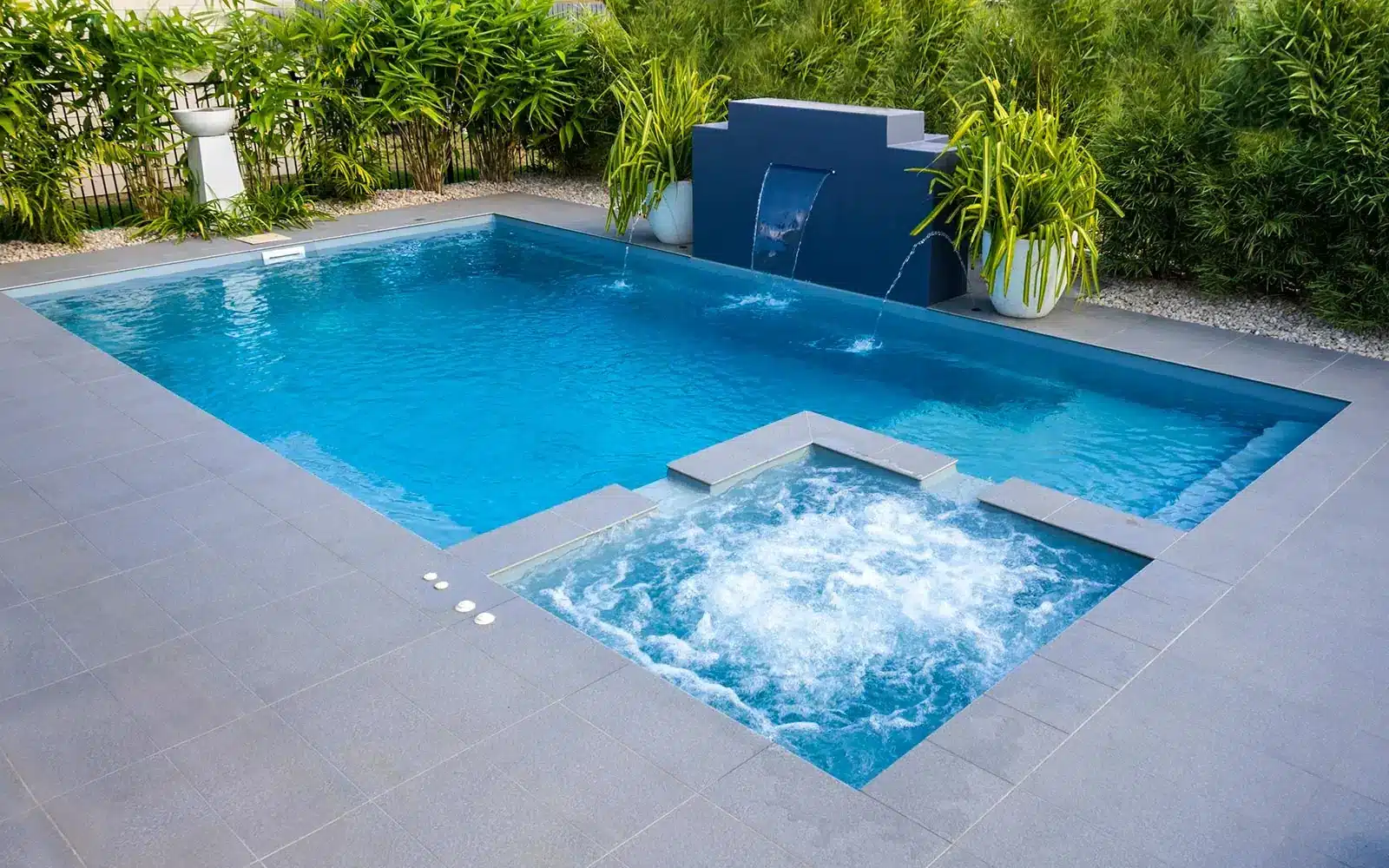
Available in 3 sizes 8m-12m
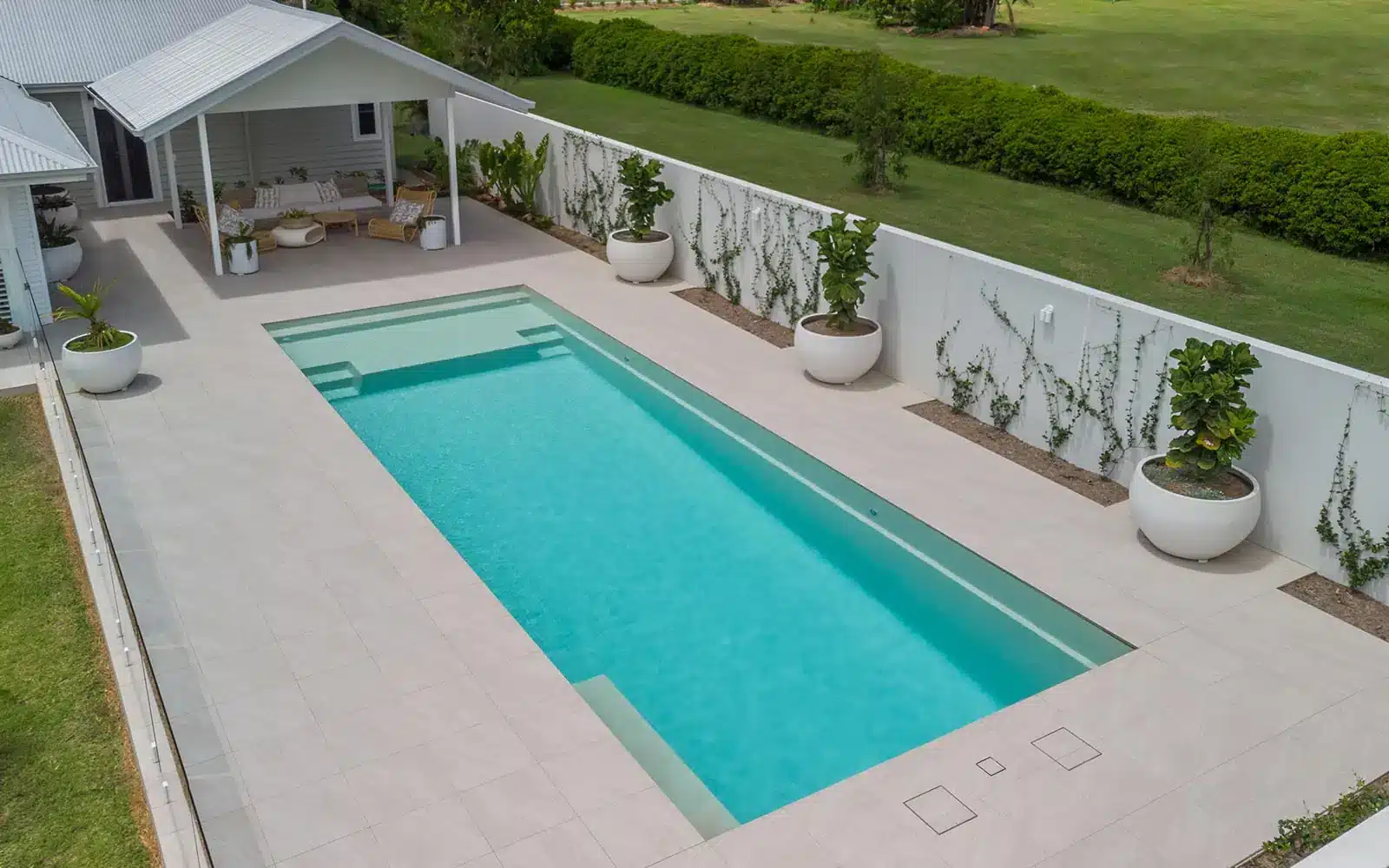
Available in 3 sizes 8m-12m
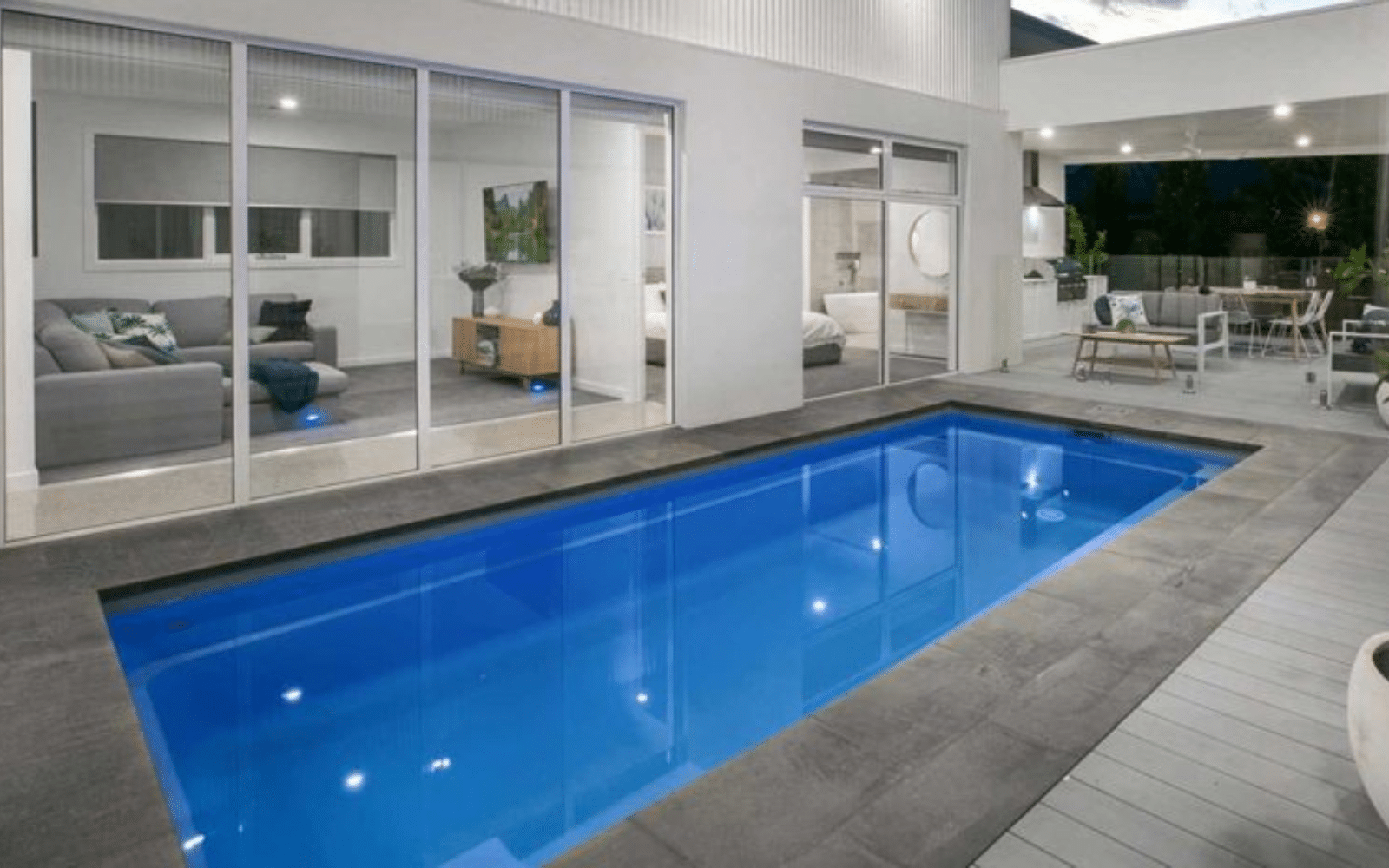
Available in 4 sizes 5m-8m
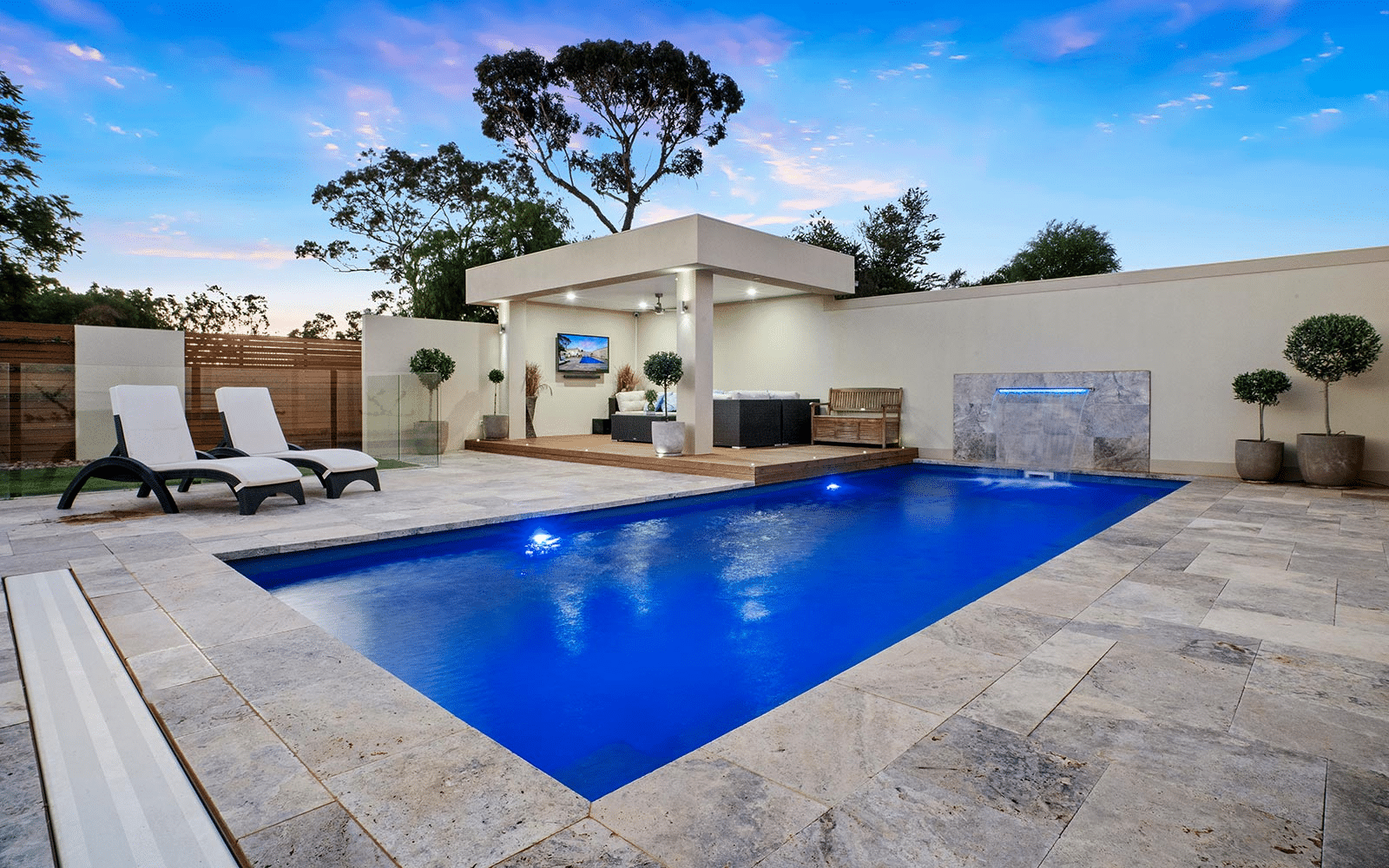
Available in 5 sizes 6m-10m
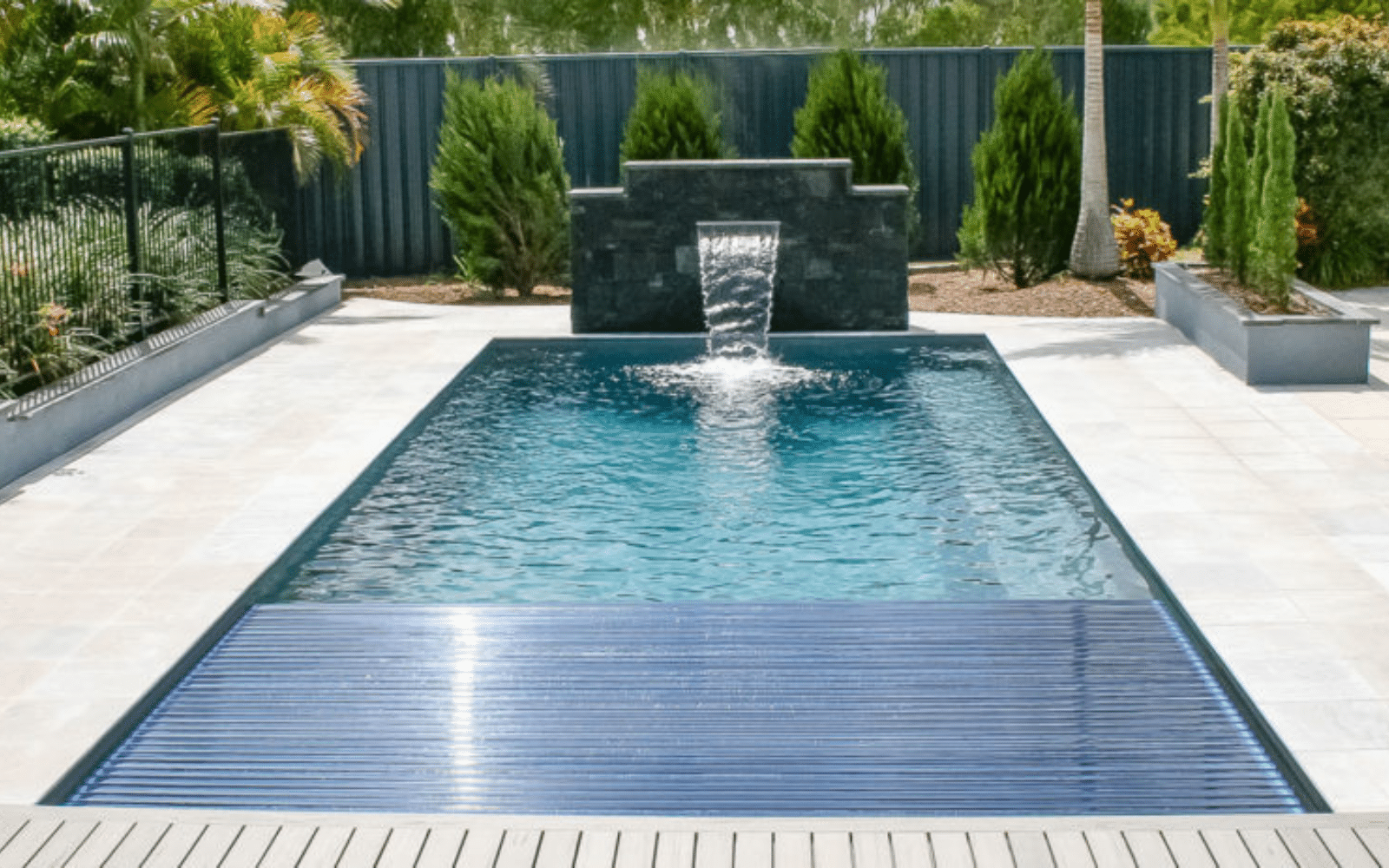
Available in 3 sizes 7.9m-9.9m
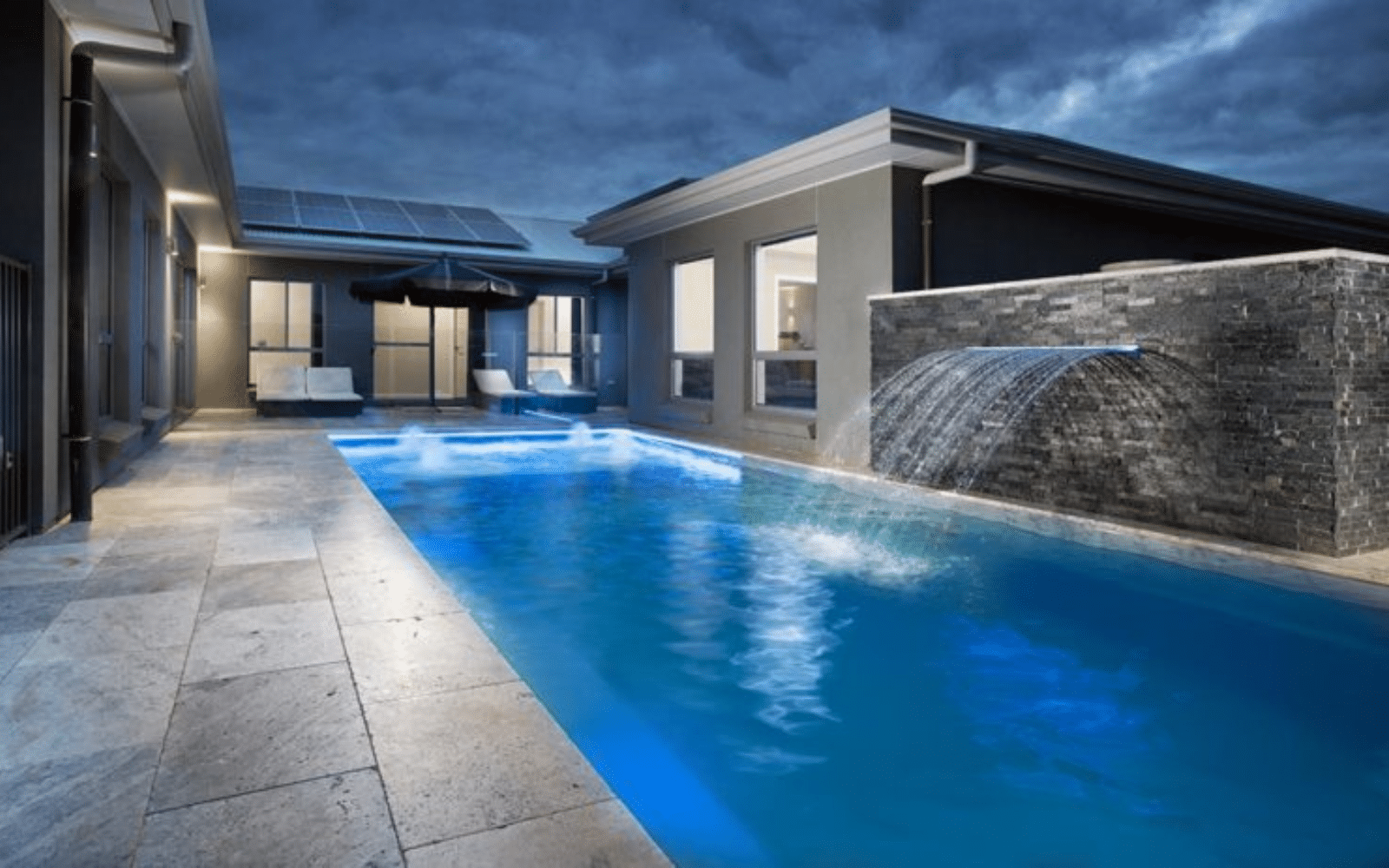
Available in 2 sizes 8.5m-9.5m
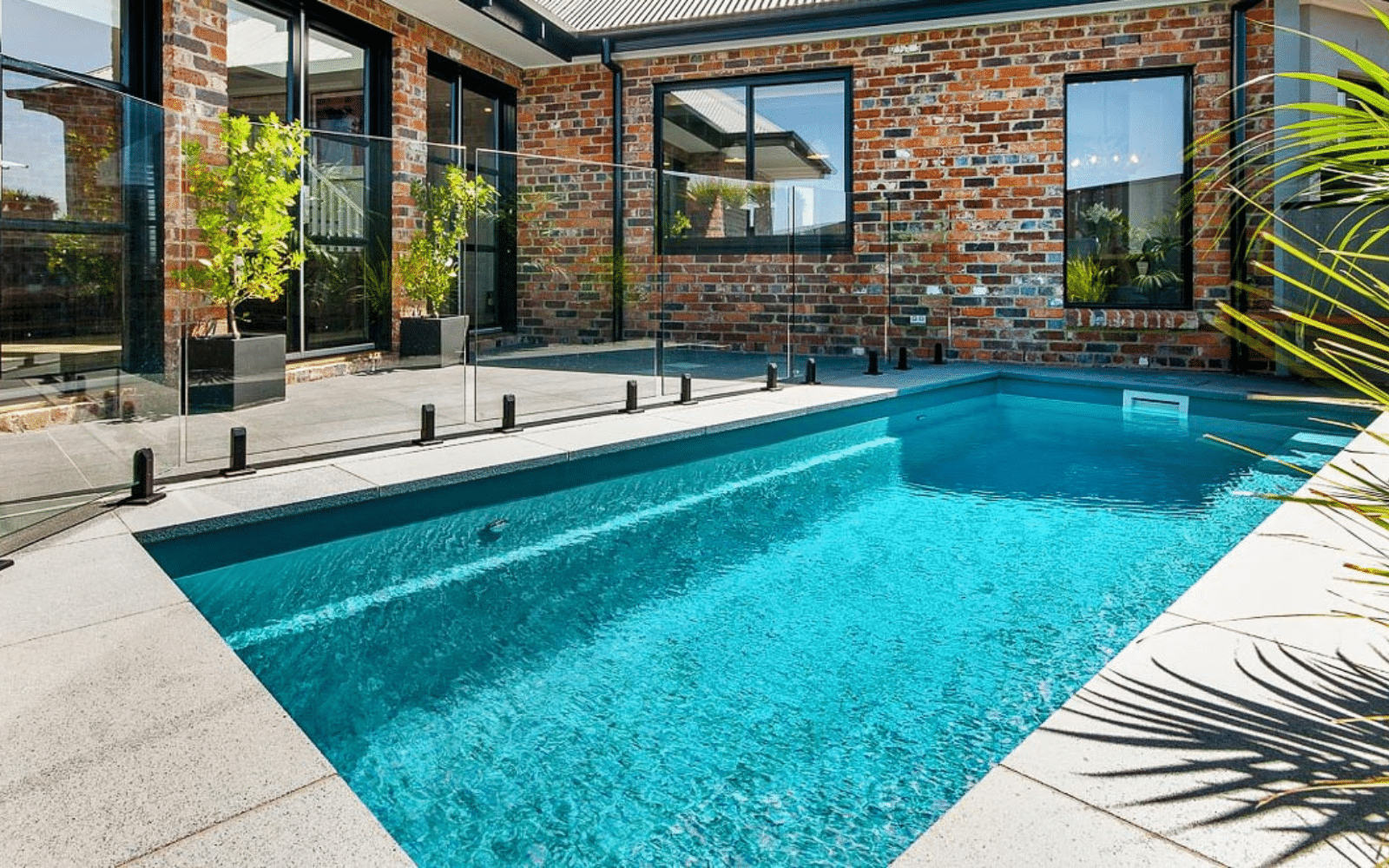
5.70m Long by 2.25m Wide
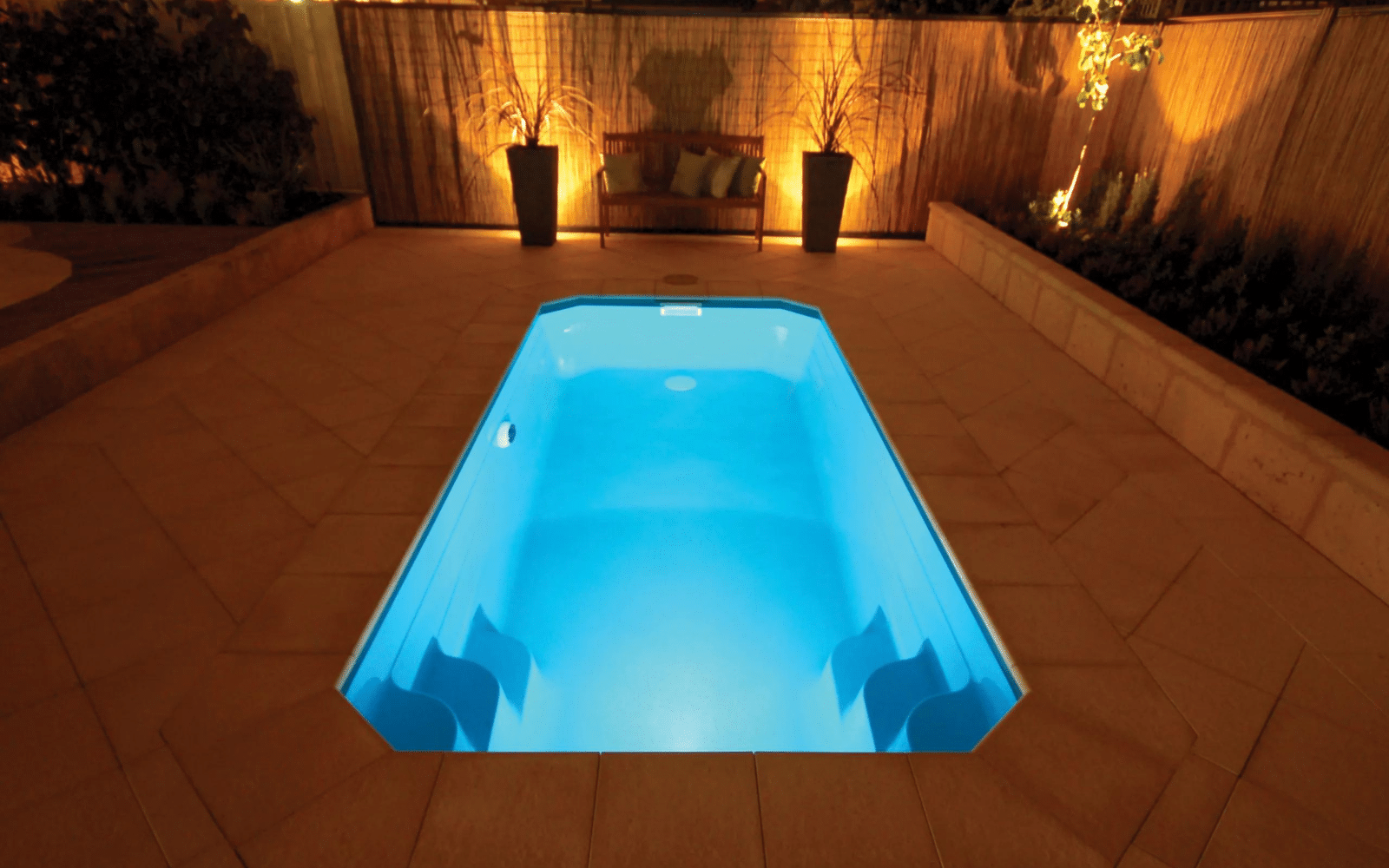
4.65m Long by 2.20m Wide
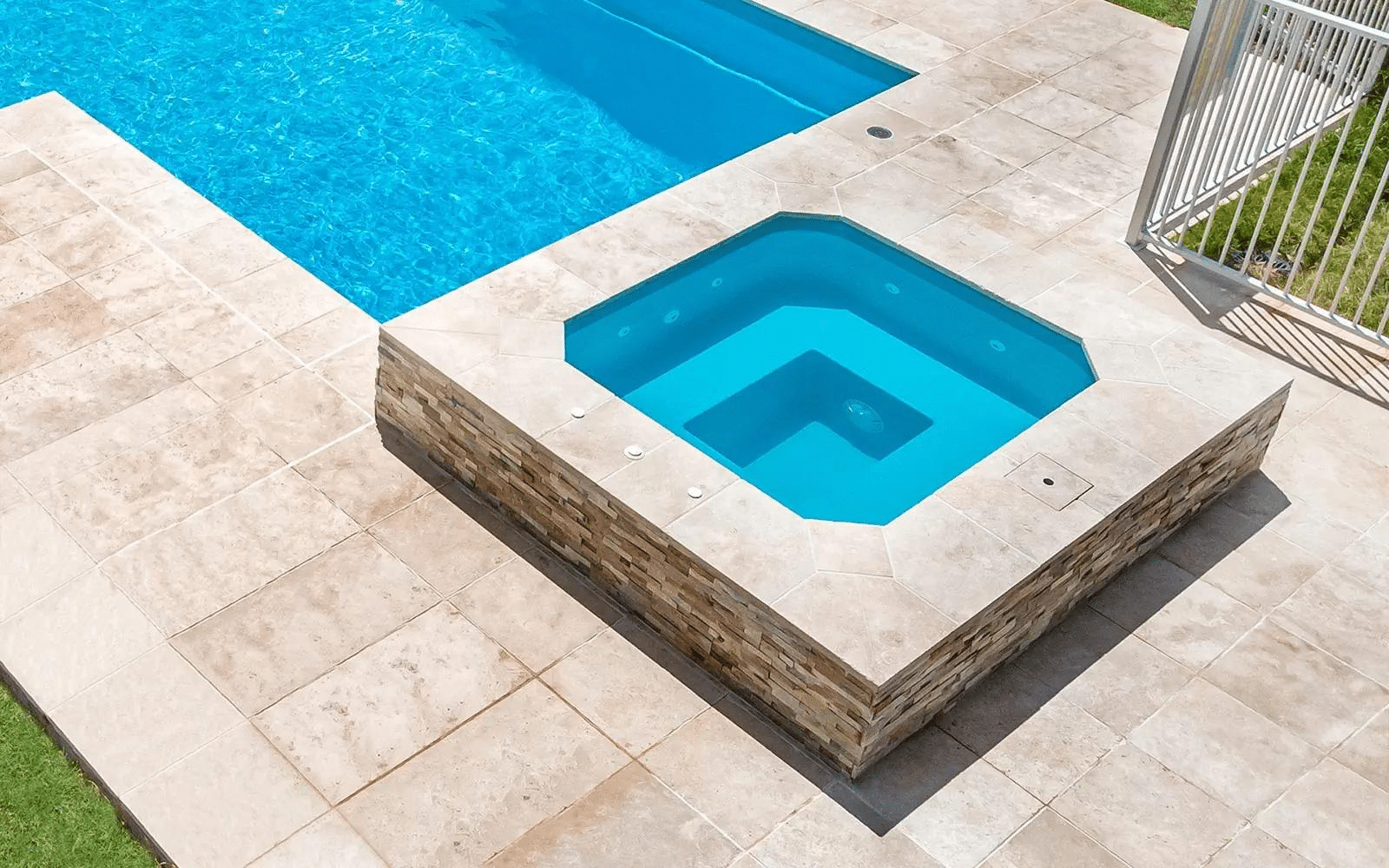
1.80m Long by 1.60m Wide
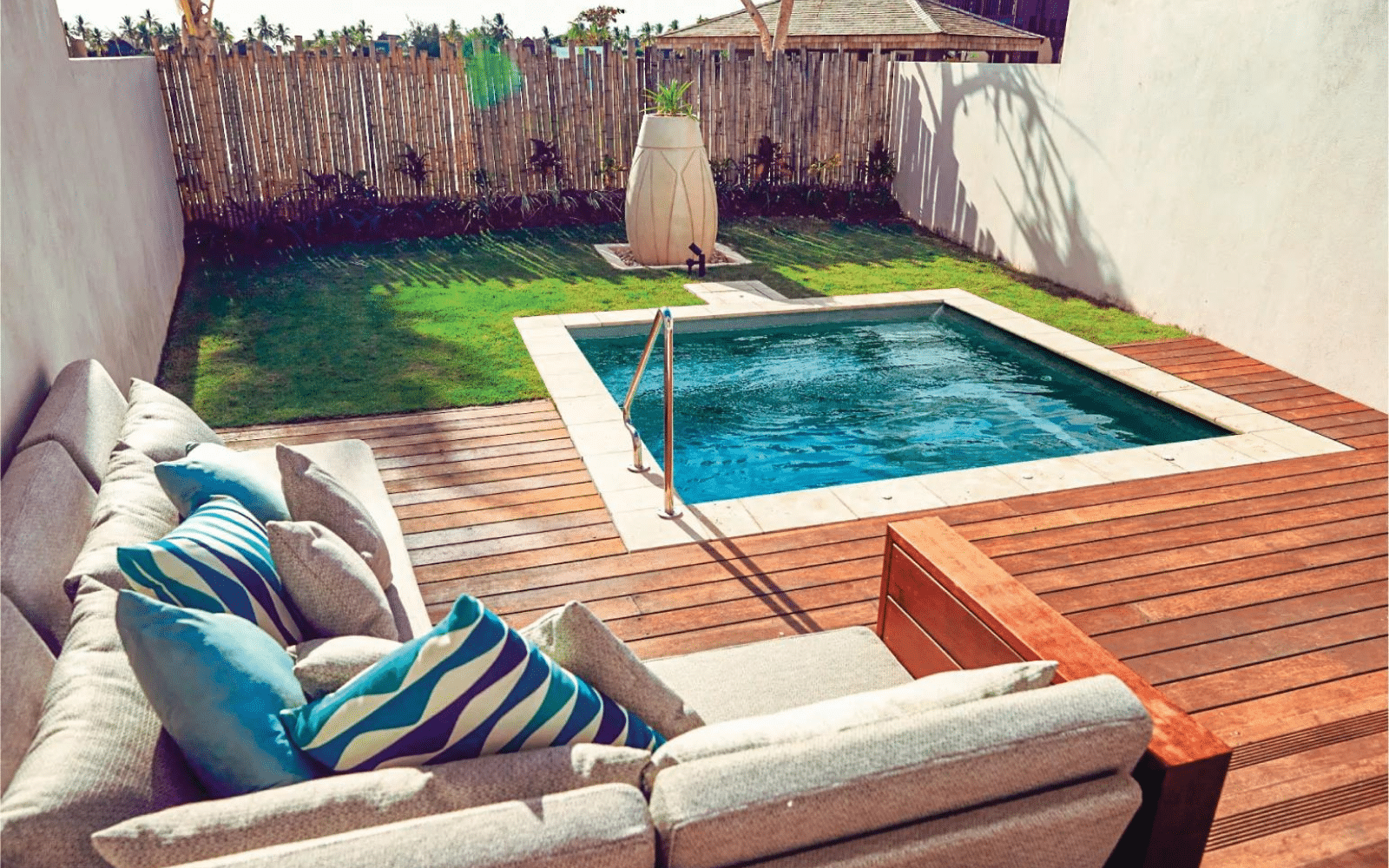
2.90m Long by 2.10m Wide